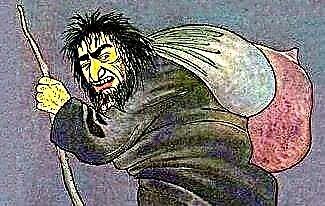Despite the small number of species described, deer are very diverse. But still, the first association with the word "deer" in the vast majority of people will be either a reindeer or a red deer - an elongated muzzle crowned with horns, big eyes, and the ability to rush away from danger in the blink of an eye.

For thousands of years, reindeer have been a source of food and various materials for humans. At the end of the ice age, people migrated north following the herds of reindeer. Quickly enough, man learned to direct the behavior of the reindeer in the right direction, to make them move to a place convenient for slaughter or capture.
It must be said that over the millennia, the behavior of deer has practically not evolved. If a danger arises, the deer run away with all their might in the direction opposite to the source of danger even now. Most likely, if not for the early domestication, deer would have simply been killed like many other animals. Some scientists believe that the deer is the second animal tamed by man, after the dog.

Reindeer are quite unpretentious to external conditions and food, easily adapt to climate change and, with the exception of the rut, do not show any particular ferocity. You can ride them on horseback (if the size of the deer allows), transport goods in packs or on sledges. For many peoples living in the Far North, reindeer breeding is a way of survival. Reindeer provide shelter, clothing, footwear, and food that includes vitamins and minerals. If not for deer, the vast expanses of northern Eurasia and America would now be deserted.

In Europe, people first exterminated the deer almost completely clean, then they called this animal “noble” or “royal” and began to vigorously honor it. Only the top of the nobility was allowed to hunt horned beauties. Deer have become aristocrats among animals - everyone knows that they exist, but few have seen them in their natural environment. Now the most realistic chance to see herds of deer is provided when traveling to the Chernobyl zone. There, without the presence of humans, deer, like other animals, feel great even in conditions of an increased radioactive background and a limited range.

1. The banks of the Volga, Don and smaller rivers are strewn with deer bones. Ancient hunters organized massive hunts, driving whole herds of deer into gorges or forcing animals to jump off a cliff. Moreover, judging by the number of bones, such mass extermination of deer in the same place was carried out repeatedly. At the same time, they did not influence the habits of deer: the animals still easily stray into controlled herds.
2. Excavations made in Denmark, Sweden and on the Karelian Peninsula show that at least 4,000 years ago, people either bred reindeer in fenced areas or kept part of the herd on them for future use. On the stones, drawings have been preserved, in which the deer are clearly located behind some semblance of a corral or fence.
3. Reindeer milk is a very healthy and nutritious product. In terms of fat content, it is comparable to pasteurized cream, and this fat is well absorbed by the human body. There is also a lot of calcium in reindeer milk. Reindeer milk butter tastes and textures like ghee from cow's milk. Modern Norwegian Swedish Lappish reindeer herders immediately separate the calves from the mother and feed them with goat milk - reindeer is more expensive. For this purpose, goats are bred next to deer.

4. The domestication of deer in Russia began, most likely, in the Northern Urals. There are reindeer migration routes and enough material to build pens for the captured animals. There is much less vegetation to the north and east, so mass domestication was almost impossible.
5. Reindeer husbandry was originally a pack-riding - reindeer served as an analogue of horses in more southern latitudes. When the Russian expansion to the north-east began, the Nenets used domesticated deer only as a draft force, moreover, people rode on horseback and transported goods in packs. As the deer migrated eastward, the amount of vegetation that served as food for the deer became less. Gradually, the breed began to shrink, and people had to give up riding and harness the reindeer to the sleds.

6. A wide variety of methods were used for hunting deer, from crossbows to huge nets. Basically, they do not differ from the methods of catching other animals, but they do not catch other animals with nets on land. The scale of such deer fishing is illustrated by the fact that in order to make a net from deer skins, 50 deer were required. The resulting network was 2.5 meters high and up to 2 kilometers long. Moreover, several such networks, belonging to different families, were combined into one.
7. The northerners did not breed deer for meat and skins because of the good life. As the Russian movement “meet the sun”, they were gradually, despite their freedom-loving character, brought “under the sovereign's hand” and forced to pay a tax - yasak. Initially, its payment was not a problem - it was necessary to hand over several skins of a fur-bearing animal per year. However, after they began to massively exterminate fur-bearing animals in the Trans-Urals, the indigenous people had to reorient themselves to a monetary tax - they could not compete with well-armed alien hunters. I had to start raising deer, selling hides and meat, and paying the tax in cash.

8. Raw deer meat and blood are excellent remedies for scurvy. Among the peoples who breed deer, this disease is unknown, although they practically do not eat vegetables and fruits - people get the necessary vitamins and microelements, and in an easily digestible form, from the blood of deer.
9. Lichens, known as “reindeer moss”, are the only food for reindeer only in the cold season (although it lasts in places where reindeer live for at least 7 months). In a short period of heat, the deer actively eat almost any greenery found in the tundra.
10. Reindeer mate in October - November, this period is called "rut". Males before mating fiercely fight for the attention of females. Pregnancy usually lasts 7.5 months, but the duration can vary greatly. The Nenets, for example, believe that females fertilized at the beginning of the rut, and also bearing a male fetus, have a pregnancy that lasts more than 8 months. Calves are on their feet within half an hour after birth. Feeding with milk lasts 6 months, however, already in the first weeks of life, calves begin to nibble greens.

11. The only period in which a deer is truly dangerous to humans is rut. The behavior of horned males becomes unpredictable and in a rage they may well trample a person. Dogs save - they know how to predict the behavior of deer, and in case of danger to the shepherd, they attack first. If the dog did not help out, there is only one thing left - to climb the nearest high stone. All northern peoples have legends about how an unlucky reindeer breeder had to hang out on a stone for a long time, fleeing the maddened reindeer.

12. The famous antlers - non-ossified outgrowths of deer antlers, which cost up to $ 250 per kilogram - are cut off from deer in July, when they are not brought to summer grazing. The reindeer are tied to a sled, the antlers are tied at the base, and the antlers are sawed off with a hacksaw. The procedure for deer is quite painful, so they try to carry it out as quickly as possible. In terms of antlers, reindeer are unique. Of 51 species of reindeer, only reindeer have antlers for both males and females. In the vast majority of other species, the horns are the lot of males. Only water deer have no antlers at all.

13. Reindeer are not slaughtered, but strangled (with the exception of the Lapps - they just use a knife). Two people tighten a noose around the animal's neck, and after about 5 minutes, the animal dies. Then the skin is removed from it, and the entrails are taken out. This is the work of men. Then the stomach of the deer is stuffed with finely chopped liver and kidneys and the fattest pieces of meat. Then everyone drinks a mug of blood and starts their meal. Carcass cutting is performed exclusively by women. The calves are beaten in a more traditional way - hitting the back of the head with a heavy object.
14. Deer are susceptible to many diseases from brucellosis to anthrax. In the Soviet Union, there was a prevention system, reindeer farms were provided with livestock specialists who shared knowledge and medicines with reindeer breeders. Now the system is practically destroyed, but knowledge is passed from father to son. Necrobacteriosis is successfully treated in deer, animals are vaccinated. The most necessary vaccination is against gadflies. It can only be done in September, so August is the most difficult time for reindeer. The skins of light deer, slaughtered at this time, look like a sieve and are not always suitable even for the bedding of Gadflies, they are beaten with sticks on bait skins and directly on the reindeer, but this procedure is ineffective - there are a lot of gadflies, and they are quite tenacious.

Damage from gadfly bites is clearly visible
15. All reindeer are constantly lacking in salt, so the best treat for them is snow soaked in urine, especially dog urine. For such snow, serious fights unfold up to the loss of horns.
16. Reindeer size is highly dependent on habitat, food and conditions. On average, domesticated deer are at least 20% smaller than their wild counterparts. The same, in turn, increase in size to the south - the Far Eastern deer can be twice the size of the deer living in the Far North. A small male reindeer can weigh 70 - 80 kilograms, the largest specimens of a red deer do not weigh up to 300 kg.
17. Proud of its humanity, English criminal law initially dealt with the hunting of deer in the royal forests rather mildly - the guilty should only be blinded and castrated. Subsequently, this omission was corrected, and those guilty of an attempt on the monarch's horned property were sent to the gallows. And Killing a Sacred Deer is a film without deer, but with Colin Farrell, Nicole Kidman and Alicia Silverstone. The plot is based on the tragedy of Euripides “Iphigenia in Aulis”, in which King Agemnemon, in atonement for the sin of killing a sacred doe, was forced to kill his daughter.
18. Reindeer are highly respected in the East. It is believed that Shakya Muni in one of his reincarnations was a deer, and Buddha expounded his teachings in the Deer Grove for the first time after enlightenment. In Japan, the deer is considered a sacred animal, like the cow in India. Deer, where they are found, roam the streets freely or nibble at parks. In the ancient capital of Japan, Naru, deer literally walk in herds. They are allowed to feed them there only with special biscuits and woe to the tourist who inadvertently rustles a bag of these biscuits! A couple of dozen cute creatures will run to him. They will tear not only a bag of biscuits, but also clothes and things of an unlucky benefactor. You can only escape by flight, having previously thrown the bag.

19. Elk is also a deer. Rather, the largest representative of the deer family - the weight can exceed 600 kg. Pudu deer are considered the smallest, living in southern Chile. They are more like rabbits with horns - height up to 30 cm, weight up to 10 kg.

20. Reindeer adapt very well to their environment. They were successfully bred in Australia, New Zealand, the Caribbean and even on the island of New Guinea, where even the tropical climate did not prevent this.
21. Deer have few natural enemies. First of all, these are, of course, wolves. They are not even dangerous because they are able to deal with a large deer alone. Wolves, contrary to popular belief about the rationality of predators in nature, kill not only for food, but also purely for sport. Wolverines are dangerous for young and weak individuals. A bear can only kill a stupid and careless deer if it gets close enough somewhere on the river crossing.
22. Hunting for deer is not a cheap pleasure. During the hunting season, prices range from 35,000 rubles for a one-year-old deer to 250,000 for a large male. Females go at a double rate - you cannot kill them, but if this happens, you will have to pay for the killed specimen, and pay a fine of 70 - 80,000 rubles.
23. If Santa Claus travels with skis or three horses, then Santa Claus rides on 9 reindeer. Initially, since 1823, when the poem “The Visit of St. Nicholas” was written, there were 8 reindeer. In 1939 the red-nosed reindeer Rudolph was added to them, illuminating the road with his nose. The rest of the deer also have their own names, and they differ from country to country. For example, the deer, which is called “Lightning” in Germany, is called “Eclair” in France and the French-speaking part of Canada.

24. Specific canned reindeer food produced by the Nenets is called kopalchem. The manufacturing method is quite simple. A deer with a whole skin (a prerequisite!) Is strangled and lowered into a swamp. The water in the swamp is always very cold, so the deer carcass, as if in a bag made of its own skin, decomposes rather sluggishly. Nevertheless, in a few months the Nenets delicacy is ready. The corpse is removed from the swamp and butchered. The resulting dirty-gray mass of rotten meat and fat is frozen, cut into thin slices, and eaten as sliced. Only locals eat! Their bodies for centuries (and the custom of cooking kopalchem is not less than a thousand years) have been accustomed to cadaveric poisons, which are enough in this dish. An unprepared person can try Copalhem only once, after which he will die in terrible agony.
25. In the game world, a “deer” is a player who does not think about the consequences of his actions, especially if these consequences affect the players of his team. Among the aristocrats, the "deer" is a noble and intelligent person, ready to sacrifice personal interests for the sake of honor in his understanding. A typical example is Athos from The Three Musketeers. In the Soviet army, “reindeer” were initially called representatives of northern nationalities who did not know Russian well. Subsequently, the concept spread to the lower caste of soldiers. The word was also present in youth slang, but no longer had a derogatory connotation: “deer” is a person who does not understand this issue. Nowadays it is rarely used in verbal skirmishes in oppositions like “You are a deer, I am a wolf!”









